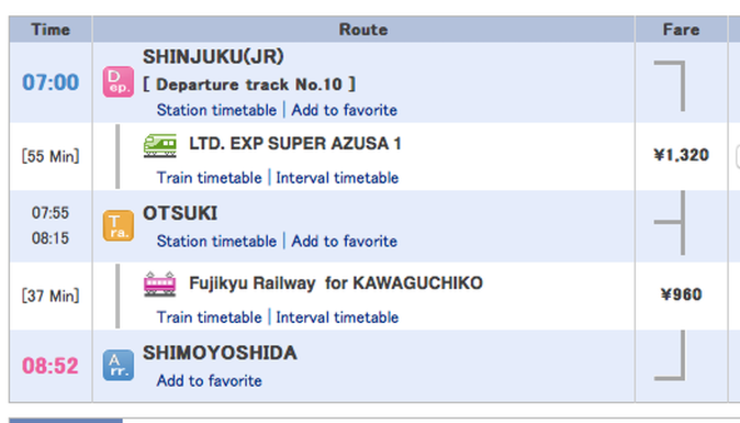Today's review is still in Japan. I've been to Japan so often lately that my girlfriend has even given me an ultimatum to stop going this year. But honestly, I secretly have a plan to visit Hokkaido. Haha. Anyway, back to the topic. When it comes to Mount Fuji, the symbol of Japan, there are many places from which you can admire it. However, you need to plan carefully, as Mount Fuji doesn't always show itself. For example, the first time I went, I stayed at the 5th station at the foot of Mount Fuji, but I still couldn't see it due to the unfavorable weather conditions. The second time I went, I still couldn't see it clearly because it was November and the ice cap wasn't thick enough. This time, I went during the New Year and was lucky enough to see Mount Fuji in its full glory. January seems to be the month when you can guarantee a clear view of Mount Fuji, with full snow cover.

Among the best places to enjoy a clear view of Mount Fuji are the five lakes surrounding it. The largest and most popular lake with accommodation options is Lake Kawaguchiko. However, this time we will not be visiting Kawaguchiko. Instead, we will stop at the town of Shimoyoshida, located about 20 minutes from Kawaguchiko. It is easily accessible from Tokyo as it is on the same route as Kawaguchiko. The most popular view here is the Chureito Pagoda, a five-story pagoda with stunning views of Mount Fuji. This spot is so popular among Thai tourists that the station signs even include Thai translations. Shimoyoshida literally translates to "foot of Mount Fuji."



The journey to Shimoyoshida is relatively straightforward. Daily express trains depart from Shinjuku Station in Tokyo, with the earliest departure at 7:00 AM. It is recommended to take the 7:00 AM train, as the 7:30 AM train requires a quick transfer with only 4 minutes to connect to the train to Shimoyoshida. The 7:00 AM train, the Super Azusa, provides ample time for the transfer. The journey to Otsuki, comparable to traveling from Bangkok to Ayutthaya, takes approximately one hour. After 8:00 AM, trains from Shinjuku to Otsuki depart hourly, starting at 8:30 AM and continuing until the last train at 11:30 PM. Passengers can choose to stay overnight in Otsuki if desired. Two trains, the Azusa and the Kaiji, serve the Otsuki route. Upon arrival at Otsuki Station, transfer to the adorable Fujikyu Railway line heading towards Kawaguchiko. Opt for the local train over the express train adorned with Mount Fuji imagery. The local trains offer a charming experience, with some even featuring Thomas the Tank Engine designs. The journey from Otsuki to Shimoyoshida Station takes approximately 40 minutes, covering a distance of 22 kilometers from Otsuki.



In addition to the above routes, if you are traveling on a Saturday or Sunday, there is an express bus to Kawaguchiko. This is the NEX (Narita Express) that runs from Narita Airport. It is a special route only on weekends for people traveling from the airport to see Fuji before returning (but I don't recommend it, as it can be a long journey). It is a good alternative if you want to go directly to Kawaguchiko on a Saturday or Sunday. The NEX stops at major stations such as Ueno, Tokyo, and Shinjuku before running directly to Otsuki and then to Kawaguchiko. From Kawaguchiko, take the Fujikyu Railway back two stations to Shimoyoshida. This is another option for people staying in Kawaguchiko. Please note that the JR Pass is only valid up to Otsuki on both routes. From there, you will need to purchase a separate ticket from Otsuki to Shimoyoshida or Kawaguchiko. However, if you have a JR Kanto Pass, it is all included, so you don't need to purchase a separate ticket. Also, if you are taking the Asuza or Kaija lines, you may not need to reserve a ticket, as there are plenty of seats available. However, I recommend booking in advance just in case.



As the train chugs along, the sky clears, revealing Mount Fuji in all its glory. For the best views, choose a seat on the right side of the train. Photography enthusiasts will be delighted by the diverse scenery and stunning vistas of Mount Fuji. As we approach Shimoyoshida, Mount Fuji appears closer and closer. It's advisable to arrive early in the morning, as Mount Fuji is located to our west, or from Tokyo. The harsh afternoon sun can make it difficult to capture clear photos of Mount Fuji, especially the pristine white snow, which reflects light exceptionally well.
From Shimoyoshida Station, Mount Fuji will be in front of you, while the Chureito Pagoda will be behind you. You will need to climb about 200 steps up a small hill, so be prepared for a bit of exercise. Cars can drive up to the pagoda, almost to the parking lot. From the station, turn right and follow the signs to the pagoda. It's very easy. Cross the railroad tracks and pass a few houses until you reach the underpass. You will see Mount Fuji all the way. The distance is about 400 meters. Go towards the sign that says "Arakurayama Sengen Park". This is the park where the pagoda is located. Cross a small stream and when you see the red torii gate in the picture, you will know you have reached the entrance.



The total travel time from the station to this point is no more than 10 minutes. However, from here, you will need to climb stairs for approximately 20 minutes. It is not far, but the stairs are quite steep, so be careful and hold onto the railing as you ascend. Elderly individuals who are not strong may only be able to reach the shrine before the pagoda. From there, you can still enjoy a panoramic view of Mount Fuji. Alternatively, you can take breaks as you climb and gradually make your way to the top. There is no need to rush. You can enjoy the view of Mount Fuji as you go. If the sun is strong, you can take off your jacket. The air will be cool and comfortable, so you will not get too tired. However, if you are still young and strong like me, you can just walk straight up. (Actually, I went to the gym before coming here, so I'm not as tired this time.)
The reward will be worth the effort. Once you reach the Chureito Pagoda, remember that if you want a picture of the pagoda with Mount Fuji and a clear sky, you should come after December. This is because the snowcap on Mount Fuji will start to thicken. It is also important to arrive at the pagoda before 10 am, as Mount Fuji is located to the west. As the day progresses, the sun will move to the top and behind Mount Fuji, which can overexpose the image. Alternatively, you can come in the late afternoon.

After enjoying the view, it was time to descend. A short walk down led us to a shrine, where we stopped to make offerings for the new year. I purchased a Japanese-style notebook to support the temple, and the kind caretaker wrote a New Year's blessing in Japanese for me. He jokingly mentioned that he would have written it regardless of whether I bought the notebook, but I was truly interested in keeping the beautiful calligraphy as a souvenir. His brushwork was truly impressive.



From Shimoyoshida, you can return to Tokyo by retracing your steps. However, if you have time to spare, you can choose to continue your journey to the next station, Fuji-Q Highland amusement park. This amusement park offers stunning views as it is located at the foot of Mount Fuji. Alternatively, you can take a train to Kawaguchiko. In Kawaguchiko, you can walk to the lake in less than 10 minutes. The first stop is the popular cable car that takes you up to the top for panoramic views of Mount Fuji. At the lake, you won't be able to see Mount Fuji from the initial stations. You will need to ascend Mount Kachi Kachi (Mt. Kaji Kaji Ropeway) to catch a glimpse of it. However, if you want to capture a picture of Mount Fuji with the lake, you will need to take a bus to the final stations.








This concludes today's review. I hope it will be helpful for those planning to visit the Red Pagoda and the Jureto Pagoda. The journey is not difficult at all, and you can easily make a day trip from Tokyo. For now, I will write it down in the readme file first. After that, I will gradually post it on the blog. You can like and support me at https://www.facebook.com/thetravelbagstory/. Thank you.
TravelTherapy
Wednesday, October 9, 2024 5:57 PM
















